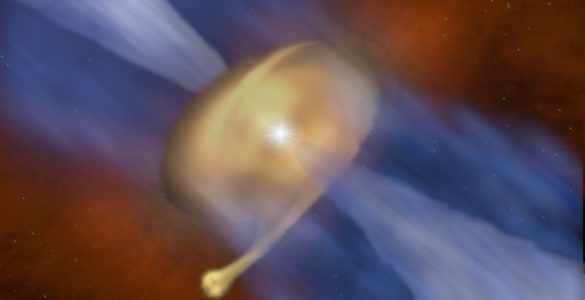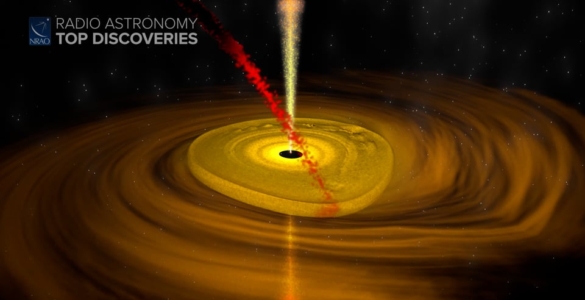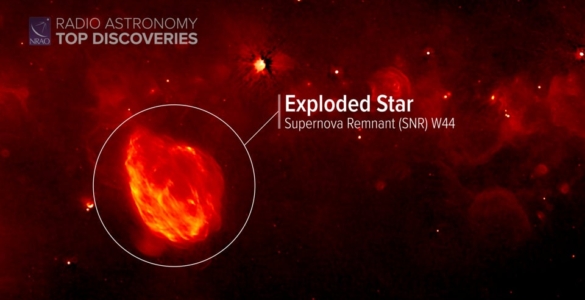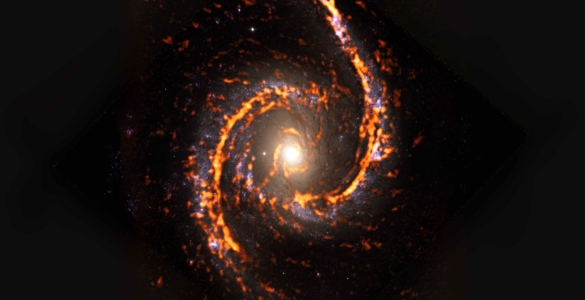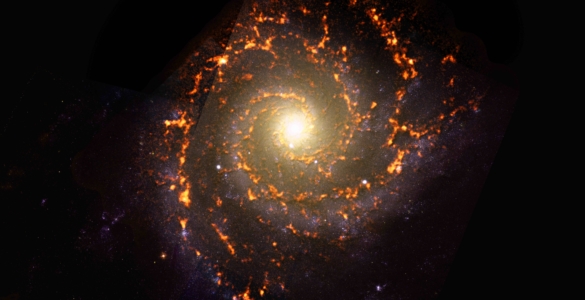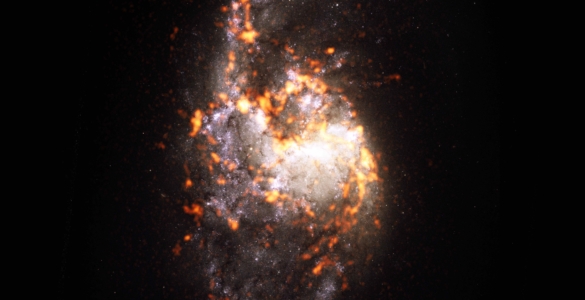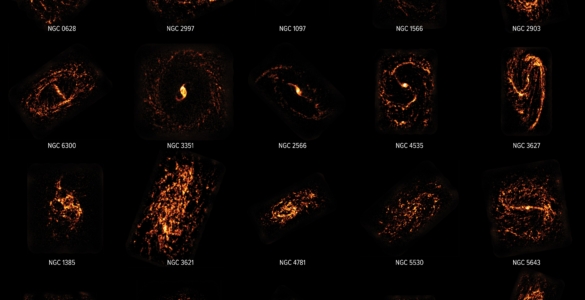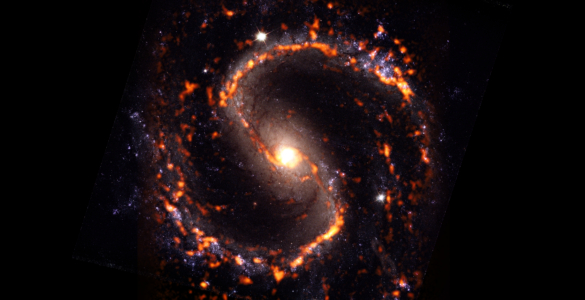Curious Binary System Seen by ALMA

Astronomers using ALMA have found two young stars with wildly different masses forming in the same protoplanetary disk. The main central star, MM1a, is 80 times more massive than its companion, MM1b. Their striking difference in size suggests that they formed by following two very different paths. The more massive star took the more traditional route by collapsing under gravity out of a dense “core” of gas. The smaller one likely followed the road less traveled by – at least for stars – by accumulating mass from a portion of the disk that “fragmented” away as it matured, a process that may have more in common with the birth of gas-giant planets. Observation of the dust emission (green) and the cool gas around MM1a (red is receding gas, blue is approaching gas), indicates that the outflow cavity rotates in the same sense as the central accretion disc. MM1b is seen orbiting in the lower left.
| Technical Details | |
|---|---|
| Telescope | ALMA; ALMA; ALMA |
| Hi-Res Full-Size | 1000 x 1000 | 47 KB | download |






